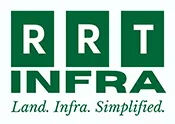The first step in property valuation is to identify the purpose of the valuation. This could be for a variety of reasons, including setting a price for a property, determining the value for a loan, or for tax purposes. Once the purpose of the valuation has been identified, the next step is to gather information about the property. This could include conducting an inspection, reviewing property records, and gathering data about the local real estate market.
One of the best practices for property valuation is to use multiple methods to determine the value of a property. This can include the market comparison method, the income capitalization method, and the cost approach. Each method has its own strengths and weaknesses, and by using a combination of methods, a more accurate valuation can be obtained.
IIt is also important to consider the market conditions when valuing a property. This includes taking into account any recent sales of similar properties in the area, changes in the local economy, and any other relevant market indicators. By taking these factors into consideration, a more accurate valuation can be obtained.
Another best practice for property valuation is to use a qualified and experienced appraiser. An appraiser can provide an impartial and expert assessment of the value of a property, taking into account all relevant factors and market conditions.
In conclusion, best practices for property valuation in land acquisitions include identifying the purpose of the valuation, gathering information about the property, using multiple methods to determine the value, considering market conditions, and using a qualified and experienced appraiser. By following these best practices, the value of a property can be determined accurately, providing a solid foundation for investment decisions and negotiations.
